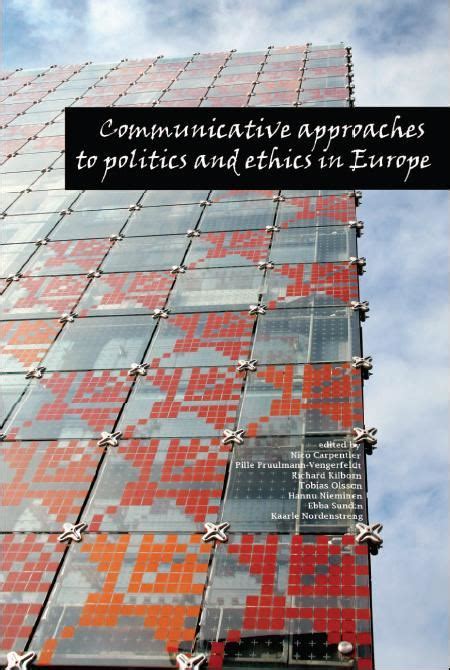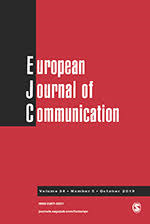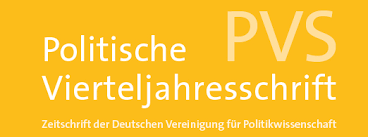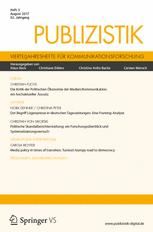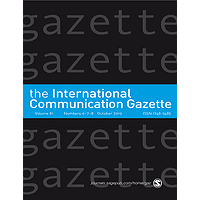Abstract
Die Entwicklung einer europäischen Öffentlichkeit wird häufig als Lösung für die Vermittlungsprobleme der EU propagiert. Die Förderung eines solchen Forums der Verständigung zwischen Bürgern und Politik ist daher erklärtes Ziel der EU-Kommission. Sie begreift Kommunikation als den Gegenstand einer neu zu entwickelnden ‚Policy’. Proklamiertes Leitbild dieser Politik ist ein ‚Dialog mit den Bürgern’. Dem stehen kritische Ansätze gegenüber, die in Informationsaktivitäten öffentlicher Organe vornehmlich Propaganda sehen. Hier setzt dieser Artikel an, stellt ein Modell zur wissenschaftlichen Analyse von Informationspolitik vor und wendet dies auf die Informationspolitik der Europäischen Kommission an. Informationspolitik wird dabei als die Gesamtheit politischer Entscheidungen verstanden, die die Informationsaktivitäten öffentlicher Institutionen regeln. Informationspolitik strukturiert die Regeln zum Zugang zu Informationen und setzt den Rahmen für die PR (Public Relation). Informationspolitik kann Anstoß zu öffentlichen Debatten geben und somit die Genese von Öffentlichkeit fördern. Empirisch gelingt dies der Informationspolitik der Kommission allerdings nicht, wie die Untersuchung zeigt, die auf einer Analyse von Policy-Dokumenten, Produkten der Öffentlichkeitsarbeit, halbstandardisierten Experteninterviews und zwei standardisierten Befragungen beruht. Im Vergleich zu den Traditionen europäischer Geheimpolitik lässt sich ein Wandel hin zu mehr Transparenz feststellen. Aber der gleichzeitig angestrebte ‚Dialog mit den Bürgern’ scheitert. So lassen sich am Fall EU Grenzen und Potenzial von Informationspolitik abstecken, die auch über die Fallstudie hinaus Gel-tung beanspruchen können. Das weit verbreitete Versprechen vom ‚Dialog mit den Bürgern’ entlarvt sich als illusorisch. Trotzdem kann Informationspolitik zur Genese einer demokratischen Öffentlichkeit beitragen.

Brüggemann, Michael (2008): Der Mythos vom Dialog mit den Bürgern. Der Beitrag der Europäischen Kommission zur Schaffung einer europäischen Öffentlichkeit. Bremen (TranState Working Paper, 84). Available online at http://www.sfb597.uni-bremen.de/pages/pubApBeschreibung.php?SPRACHE=de&ID=99.

